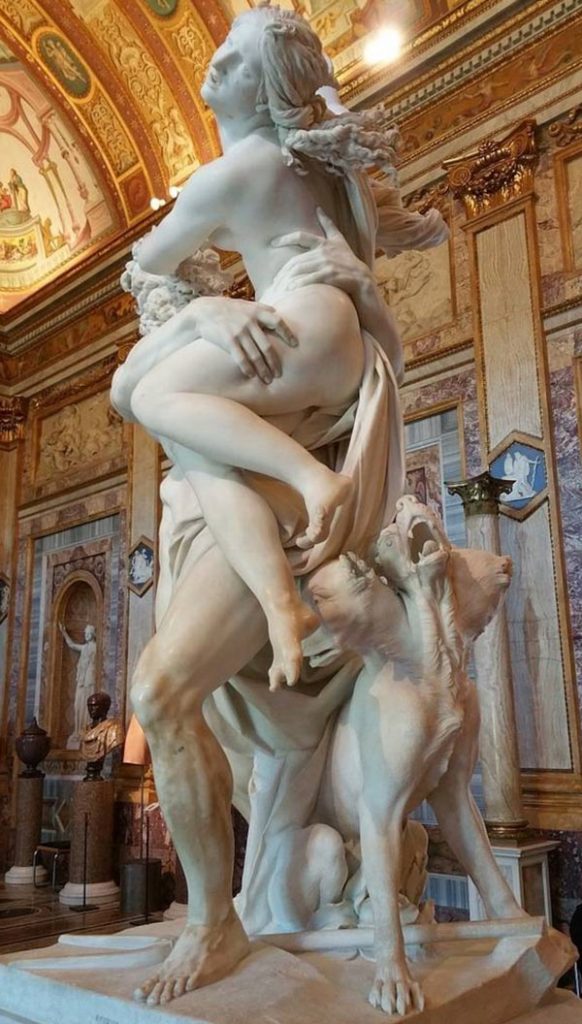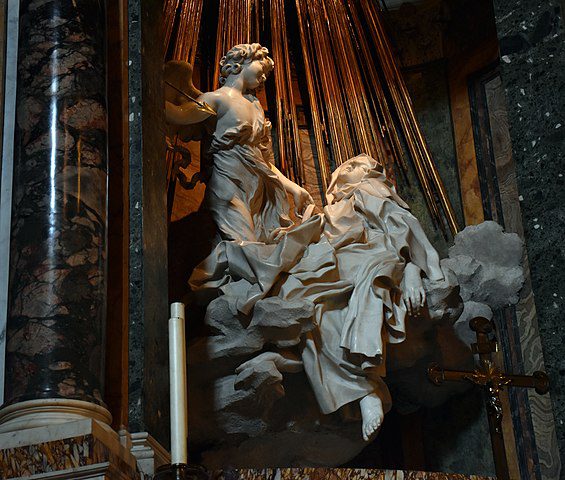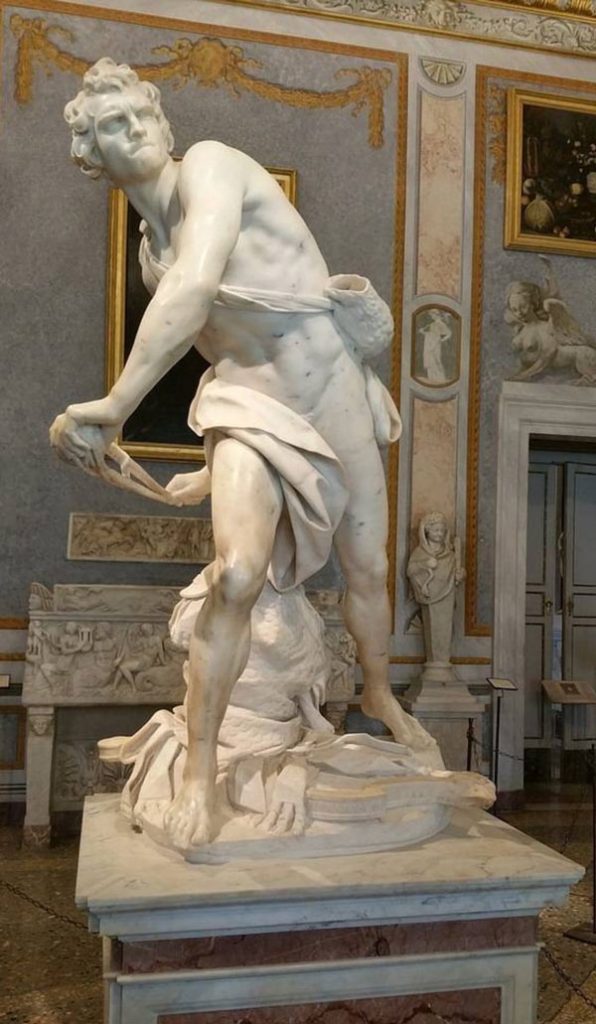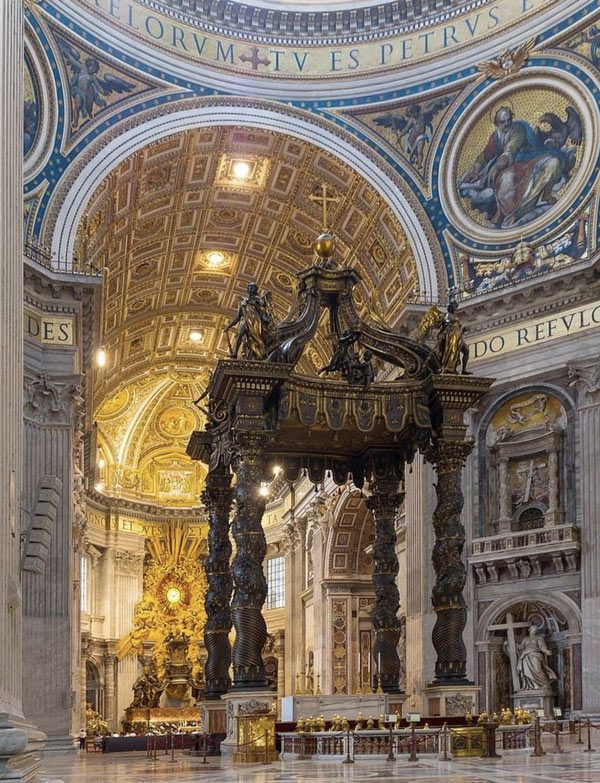
Gianlorenzo Bernini (1598–1680) was an Italian artist renowned for his contributions to the Baroque style of art and architecture. Born in Naples, he moved to Rome in his early childhood, where he would spend most of his life, shaping the city’s architectural and artistic landscape. Bernini was a true polymath, whose talents spanned across sculpture, architecture, painting, and stage design, earning him recognition as one of the most versatile and influential artists of his time.
Bernini’s career began under the watchful eye of his father, Pietro Bernini, a successful sculptor who nurtured his son’s prodigious talent from a young age. Gianlorenzo’s exceptional skill was evident in his early works, which combined intricate detail with dynamic composition, characteristics that would come to define his mature style. His ability to convey intense emotions and movement in marble endeared him to the Catholic Church, which became his most significant patron.

The artist’s breakthrough came with his series of sculptures portraying biblical and mythological figures, imbued with a lifelike energy and emotional depth that had seldom been seen before. Works such as “Apollo and Daphne” and “The Rape of Proserpina” showcase Bernini’s mastery over marble, turning the rigid material into seemingly pliable flesh and fabric. These sculptures not only demonstrated his unparalleled skill but also his understanding of human anatomy and emotion, making them some of the most admired pieces of Baroque sculpture.
Bernini’s talents were not confined to sculpture. He was also a master architect, responsible for some of Rome’s most iconic buildings and public spaces. Perhaps his most famous architectural achievement is the design of St. Peter’s Square in Vatican City. His innovative use of colonnades to embrace visitors in “the maternal arms of Mother Church” transformed St. Peter’s Basilica into a grandiose and welcoming space, a masterpiece of Baroque urban planning.
Church Builder
Another significant aspect of Bernini’s work was his involvement in designing and constructing several Roman churches and chapels, such as the Cornaro Chapel in Santa Maria della Vittoria. Here, his sculptural group “The Ecstasy of Saint Teresa” stands as a testament to his ability to blend sculpture, architecture, and theatrical lighting to create immersive religious experiences, encapsulating the spiritual fervor of the Counter-Reformation.
Bernini’s influence extended beyond static works of art and architecture. He was also involved in stage design, bringing his flair for the dramatic to performances and ceremonies, further cementing his role as a central figure in the cultural life of Rome. His designs for fountains, such as the Triton Fountain and the Four Rivers Fountain, added to the visual and social fabric of Rome, serving both aesthetic and practical purposes.

Despite his success, Bernini’s career was not without challenges. His temperament and the intense competition of the Roman art world led to rivalries, most notably with the architect Francesco Borromini and the painter Pietro da Cortona. Additionally, not all of his projects were realized or well-received. His designs for the Louvre in Paris, for example, were ultimately rejected, a rare setback in an otherwise illustrious career.
Bernini’s legacy is profound, his works continuing to attract admiration for their technical virtuosity, emotional depth, and artistic innovation. He played a pivotal role in defining the Baroque style, with his creations embodying the movement’s emphasis on emotion, movement, and the blurring of the line between the arts. His influence can be seen not only in the works of his contemporaries and successors but also in the broader development of Western art.
Baroque Imagination
Bernini was not just an artist; he was a visionary who saw the potential of art to inspire and elevate the human spirit. His work remains a testament to the power of creativity, a bridge between the earthly and the divine. As we walk through the streets of Rome or stand in awe before his sculptures, it is clear that Gian Lorenzo Bernini was not only a sculptor of marble but also a sculptor of space, emotion, and the Baroque imagination.
In his personal life, Bernini was known for his devout Catholicism, which deeply influenced his artistic themes and objectives. He was married to Caterina Tezio, with whom he had eleven children, and his family life was marked by both joy and tragedy. Despite the pressures of his career, he was a devoted father and husband, and his personal experiences of love, loss, and faith deeply informed his artistic output.
Bernini’s work ethic was legendary; he maintained a rigorous schedule, dedicating himself to his craft with an intensity that sometimes bordered on obsession. This relentless drive, combined with his natural talent, allowed him to produce a vast and varied body of work that continues to be studied and revered.
As we reflect on Bernini’s contribution to art and architecture, it is clear that his legacy is not merely in the physical works he left behind but also in his approach to creativity. He pushed the boundaries of what was possible, blending disciplines to create works that are more than the sum of their parts. In doing so, Bernini not only shaped the aesthetic of an era but also laid the groundwork for future generations of artists to explore and innovate.

Gianlorenzo Bernini’s life and work are a testament to the enduring power of art to shape our environments, express our deepest emotions, and elevate the human experience. His vision and virtuosity make him a towering figure in the history of art, whose influence is as profound today as it was in the seventeenth century. Through his sculptures, buildings, and designs, Bernini invited us to see the world anew, infused with beauty, emotion, and the divine.




